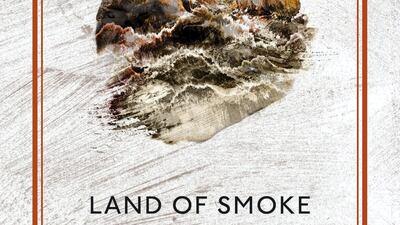There are forty-six pieces in Sara Gallardo's Land of Smoke.
It doesn’t seem quite correct to describe them all as short stories, since only a handful are of a length, shape and structure that merit the term. The rest are better described as vignettes, sketches, or fragments even. Together they combine historical detail, nods to fairy tales, elements of oral storytelling, and a dash of magical realism.
What comes across strongest though is how compassionate a storyteller Gallardo is, whether it’s in the description of a flawed father who loves his middle children the most – “I sell newspapers for the six of them, coughing in this street I hate, every night until dawn. But if anyone passing sees me smile, it’s because I’m thinking of the middle ones” – or the existence of two loners, both of whom dine in the same restaurant: “their tables were just two cells, two monosyllables solved in a crossword just started.”
It is man’s battle with the natural world, however, that’s the focus of many of the pieces.
On the Mountain, the story with which the collection opens, is set in that "terrible place, the Andean cordillera. Very high up, some mountain range in Peru." It's a vista of rocky crags and biting wind, home to condors as large as men. "Look for shelter and you find ice, look for warmth and you step in a bonfire," the soldier who's narrating the story, his job being to hunt down the Spanish, explains. "And so you die in two different ways, and the mountain stays indifferent."
In the later sketch, In the Puna, the narrator describes the arid, high plateau to which he's been transferred – he's a head teacher – as a deadly "desert. People in the city like to listen to songs naming it," he says. "They don't know oxygen isn't breathed there, the water boils cold. Children often die on their way to school."
Meanwhile, in Love, a small, scattered rural community is threatened by "the big rain", forcing two young women to make a life-or-death escape, vicious wild dogs chasing their cart every mile of their journey to safety through the storm.
So too the protagonist of Things Happen – one of the lengthier and more substantial narrative pieces here – is threatened by the elements.
But whereas the terror in the examples I've just given stems from the threat posed by very real inhospitable environments or ecological systems, Things Happen strays into the realm of unreality, some kind of dreamscape even. It begins in Lanus, a district in greater Buenos Aires, where a pensioner spends his days tending his garden.
One day, without warning, he wakes to discover that the plot of land on which his house and garden stand has somehow floated free of terra firma in the night, and he’s now adrift in the middle of an ocean. A terrible ordeal thus unfolds. First he has to contend with the beating heat of the sun and a quickly dwindling fresh water supply.
Days later, as he teeters on the edge of dehydration-induced madness, a fog descends, then the air grows colder and colder and he floats onward into a sea of ice. In a description that's so incongruously domestic as to be perfectly evocative, great chunks of ice float past our desperate anti-hero, animals frozen inside them "like cherries in aspic". Although integral to stories like Things Happen and the shorter sketch A Secret, in which a young woman looking for a little excitement uses the "spare head" she keeps in her closet to begin a new double life in Buenos Aires, Gallardo uses magical realism sparingly.
Born in Argentina’s capital city in 1931, Gallardo began publishing in 1958. She was the much celebrated author of newspaper columns, essays, novels, and children’s books, as well as a friend and contemporary of both Jorge Luis Borges and Julio Cortazar.
Rather than being a collection of pieces written during the course of her career, Land of Smoke was apparently written after the death of her second husband in 1975, and it's discernibly steeped in loss; Jessica Sequeira's beautiful translation – the first English version of Gallardo's work – capturing a real sense of melancholy, threat and something close to despair.
____________
Read more:
Book review: Writing as catharsis, how Amy Tan untangled the knots of her past
Book review: Trumpocracy - an essential read for our times
Book review: Leïla Slimani's Lullaby is a worthy read that will chill its readers
____________
Let’s also not forget menace, whether from the natural world or in the form of human violence. Take this delicious description of a man: “Something about him reminded you of those wasps that can drag a spider three times their size.”
Or the fragment Red, in which an angry mob – a "vortex" the police are unable to stop – surround a building in which the victims of a violent murderer have been discovered. "Get the killer!" chants the narrator in unison with those around him, the crowd seeing red. "Red on my hands, which I kept hidden as I shouted," he confesses without warning, vertiginously shifting the reader's perspective on the scene. "Red as the steel in my pocket." This particular sketch wouldn't seem out of place in Mariana Enriquez's Things We Lost in the Fire, her use of horror, along with that of fellow Argentine writer and Man Booker International-winner Samanta Schweblin, directly traceable back to Gallardo's powerful, haunting work.

